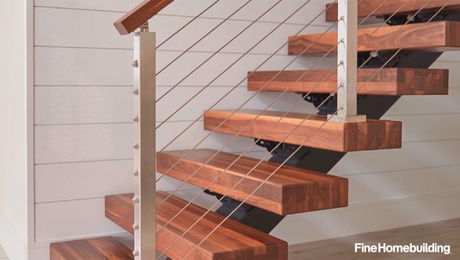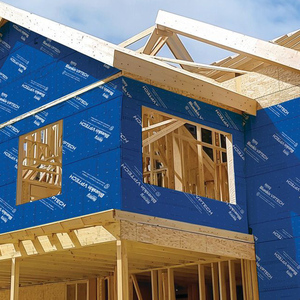Faux and decorative painter having problems painting concrete interior floor. I painted designs over 600 sq. ft. and a few spots have come off. I am concerned that the rest of the floor may have similar adhesion problems. How do I repair the spots where the paint and clear finish have pulled off and how can I add additional protection to the rest of the floor? What happened to cause these problems? Are there any other finishes that can now go over the EPMAR 2700 when scratches appear?
The procedure I followed as instructed by a conrete co. and a painting co. are:
1. sanded dried old linoleum adhesive
2. vacuumed, dusted, washed floor thoroughly with water
3. primed withUltra Surface WB Epoxy
4. Dried overnight
5. applied base coat of Benjamin Moore latex paint
6. dried overnight
7. masked off design with delicate painters tape
8. spent 2-3 days painting designs, noticed tape pulled up base paint even when the most delicate tape was used and removed immediately after painting
9. let final paint dry overnight and applied EPMAR 2700, as per instructions
10. noticed missed spots, purchased more EPMAR 2700. 3 days later I went over missed spots. Weather was cool and paint expert advised I could put this coat on at this time. Did not put 2nd coat over rest of floor. Noticed paint cans I had set on the floor stuck to floor, and pulled it up in a couple of areas. seems that floor scratches easily inareas, down to primer.



















Replies
Painting a concrete floor is one of those things lots of people think is a good idea until they've had one. There's a number of problems that can occur, and they aren't usually something you see until its too late. Water is one. On any surface, water migrating from behind the paint can pop it off the surface. On a concrete floor, if the dirt below exceeds the air above in mositure, you can get this. Any leaks or grading issues, same.
I don't think the prep work was sufficient. That's a separate issue, but relevant. Anytime you've had anything (like linoleum) adhered to the floor, you have to get it all off, and washing doesn't cut it. You want a fresh surface to adhere to, so there's two ways to get it. One is to shot blast the floor - think sandblasting but with a machine the uses steel shot. The other, if the surface is pretty clear but just needs grip, is to etch it with muriatic acid. Then neutralize the acid, wash, and let dry. Several days, not 24 hours.
I don't know BM's paint lines, so I don't know if the product you used was designed for floors or not. I'll say that latexes in general are more prone to issues on a floor than oils, and epoxy is probably the hands down winner for durability.
Without looking at the floor, no-one here is going to give you a perfect answer, just educated guessing. I suspect from what you describe that the whole thing is going to chip away in a matter of months.
"If you pick up a starving dog and make him prosperous, he will not bite you. This is the principal difference between a dog and a man." - Mark Twain
I'm monitoring this for my sister, who is the one who did the work...The floor in question is in a 30 year-old home, and in San Diego, which is a very temperate climate. Nonetheless, the issue of moisture is a concern. Don't you think that an epoxy primer should have taken care of any vinyl residue?
Jack
No, and I'll say not because the epoxy wouldn't be a good sealant. The epoxy itself would require the prep I talked about. Cleaned and etched, or the epoxy would be coming off in sheets.
You see sometimes DIY garage floor kits in box stores - stupid cheap, like $40 for a garage floor, and people put it on thinking epoxy will cure all. But they don't tell you how much work comes before hand, and they sell a low grade epoxy. Longevity in those cases is fairly rare. A good quality epoxy can easily run $40 a gallon, (2 part, so 40 for resin, 40 for hardener, and maybe get a 2 stall out of 4 gallons) and places that sell them typically screen who's doing the buying. Either you're a contractor and they know you aren't going to screw it up or they're getting some other form of insurance. And it makes sense. It's going to be hard to prove application error vs prep vs material defect when it's down and cured, and the company is protecting their tail.
I've epoxied garage floors before. If it's anything other than new cured concrete, I won't touch it. But if you prep it right, you can give a 10 year guarantee without a headache. I expect at least 20 out of what I use, unless there's some kind of real abuse going on."If you pick up a starving dog and make him prosperous, he will not bite you. This is the principal difference between a dog and a man." - Mark Twain
Per the instructions of the concrete products supplier, my sisiter sanded the vinyl residue left on floor prior to washing and drying. In talking to her last night, it seems that the problem is that for whatever reason, the latex floor paint doesn't seem to have a strong bond to the epoxy primer.
I am guessin the epoxy was too slick for the latex. No tooth. Mebbe a scuffing woulda helped..kinda late now tho'.
Spheramid Enterprises Architectural Woodworks
Repairs, Remodeling, Restorations.
paint does not like concrete due to moisture, the correct way is to acid stain the concrete the color you want.
did she scuff the epoxy too or leave it as is? That could do it too. As sphere says. Epoxy dries very hard and slick. You'd want it toothy for another layer of something to stick to it."If you pick up a starving dog and make him prosperous, he will not bite you. This is the principal difference between a dog and a man." - Mark Twain
No, I don't think that she scuffed the epoxy primer, but I'll ask her. Wouldn't you think that something sold as a concrete primer wouldn't need to be scuffed?
An acid stain wouldn't have worked due to the intricacy of the design. I acid stained my 600 sq.ft. living room 15 years ago, and whew, what a lot of work! Fortunately, I was going with only one color.
understand the concern. Finishing is one of those things where terminology and intent get a little jostled around en route to the consumer. You are but a grain of sand in the beach of people who have gotten mass frustration with labeling issues. The assumption is always from the manufacturer that the person doing the work has experience. Which, as you know, is not the case. A primer, per se, preps the surface to be bonded to. That's the generic version.
Some primers promote bonding. If you were painting latex over oil, a bonding primer would be in order. Some are stain blockers. That creepy rust stain or grease mark that keeps seeping through the paint. Some have intentionally high solids contents designed to even out porous surfaces, such as drywall. Others are designed to be sanded in short order - good for painted trim. Some form films, some are designed to be absorbed - like a drywall conditioner. Anywho, epoxies, by their nature, dry hard and smooth, they don't absorb into anything or let anything absorb into them. Since they cure by chemical reaction, painting over one is not substantially different than dealing with any other reactive finish, such as varnish. The "bulletproof" nature of them is probably the primary property that makes them so desirable. So if you bought an epoxy primer, and that's all it said on the box, it can mean a multitude of things. It is all epoxy, it has epoxy in it, it is for putting epoxy over, or it is an all around combo primer made up of epoxy. Assuming the latter, it should have a variety of the talents listed above. Stain blocking, pore filling, prepping. But where you are, somewhere in the fine print on an MSDS sheet that you never got is probably a little note with an * by it that says for best results let the epoxy cure a full 7 days and scuff it if you're going to paint over it.
All this back and forth has gotten my interest piqued. Now I'm waiting for the other shoe to drop in two weeks when you tell me that the problem is fixed and I was off in another galaxy. Kind of like stump the chumps on car talk. "If you pick up a starving dog and make him prosperous, he will not bite you. This is the principal difference between a dog and a man." - Mark Twain
Without knowing the applied material specifications I guess the expansion ratios of glue,epoxy,latex and epoxy again differ too much. Especially the latex product sandwiched between epoxy makes me feel uneasy.